It is not easy to grow an orchid at home, so that it develops normally and blooms profusely, you need to follow a number of strict recommendations. In nature, a flower grows in tropical forests, with the help of developed roots, it is located on the bark of tree trunks and branches, extracts nutrients and moisture from it. The home substrate should have a similar composition and structure. How to prepare bark for orchids with your own hands, what raw materials can be used and how to properly process it.
Content
How to choose a material
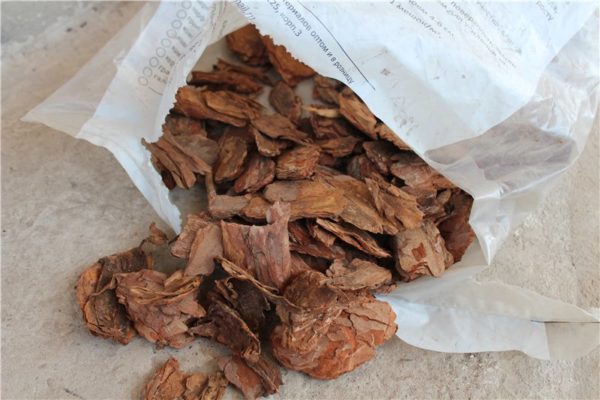 The bark is a generalized term for a complex of tissues of various structures and origins, covering the cambium of stems and roots. For planting orchid plants, you can use bark from large species of wood, raw materials can be used in pure form or prepare a mixture based on it. The tree bark not only structures the substrate, it retains moisture, nourishes the plant with all the elements necessary for normal development and abundant flowering.
The bark is a generalized term for a complex of tissues of various structures and origins, covering the cambium of stems and roots. For planting orchid plants, you can use bark from large species of wood, raw materials can be used in pure form or prepare a mixture based on it. The tree bark not only structures the substrate, it retains moisture, nourishes the plant with all the elements necessary for normal development and abundant flowering.
Raw materials can be found in plantings, forests, in urban park areas, and sometimes on their own site, especially lucky for those who grow old conifers nearby. It is best to harvest the upper layers of the cortex, which have peeled off from the trunk, they are more easily broken and contain a minimum amount of resin. It is undesirable to collect sunburned, rotten, undermined by insects and darkened areas.
In the process of harvesting, you need to ensure that there are no bast fibers on the separated fragments, they can not be used when planting orchid plants because of the rigid structure. Small pieces of wood can cut into the root, which will lead to decay. The collected raw materials must be cleaned of insects, dirt and not firmly held layers. The bark of which tree species is more suitable for orchids will be described in the table.
| Tree species | Features |
| Pine and spruce | Common material for the substrate. Due to the rapid decomposition of raw materials, the preparation process is simplified |
| Hard leaved and soft leaved | Suitable for phalaenopsis orchids, however, there are not many trees with peeling bark (without bast fibers) |
| Cedar, cypress and thuja | It is acceptable to use for the manufacture of the substrate, but only if there are no other options, since the decomposition process is very long |
When collecting material, a thorough assessment of the condition of the tree should be carried out; it should not be rotten or have obvious signs of disease. The collected material will easily crumble, and can also become a source of infections and harmful insects harmful to the orchid. It is permissible to take raw materials from a fallen or dry tree. Over time, nutrients accumulate in the fibers, there is practically no tar left in them. Residents of the European part can use oak bark for planting an orchid, it is more nutritious than pine.
Top substrate manufacturers
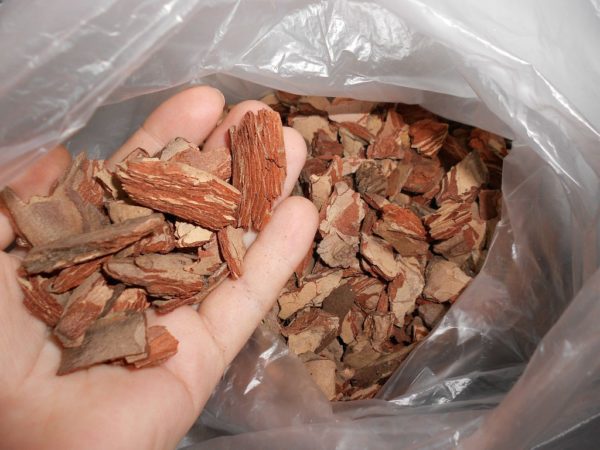 It is not difficult to independently prepare the bark, however, some flower growers prefer to use an industrial substrate (with a complex of additional components). You can save time on the collection and processing, but there is no guarantee that the store will have high-quality material without pests and pathogens. Unreasonable savings when choosing a purchased mixture threatens with the loss of a flower.
It is not difficult to independently prepare the bark, however, some flower growers prefer to use an industrial substrate (with a complex of additional components). You can save time on the collection and processing, but there is no guarantee that the store will have high-quality material without pests and pathogens. Unreasonable savings when choosing a purchased mixture threatens with the loss of a flower.
For those who do not have plantings, forests, parks or woodworking industries nearby, option one is to choose a ready-made substrate. But how to do this when there are many options and there is no way to get a detailed, reliable consultation. In order not to take risks, you need to buy mixtures from reliable companies verified by flower growers, we will describe the products of several of them.
| Substrate name and country of origin | Description |
| Morris Green (Russia) | Pine bark, suitable for all orchids. Raw materials processed from infections and parasites, consists of large fractions |
| Orchiata (New Zealand) | Granular material that does not cake for a long time. The substrate does not need to be processed, it is already disinfected. Used for many types of indoor orchids. |
| Complex Ceramis (Germany) | Due to the balanced composition (bark, clay, nutrient complex, moisture regulator), the mixture retains friability, does not cake and does not become dense for several years |
| Royal Mix (Ukraine) | A loose substrate consisting of bark, peat, charcoal, complex fertilizer and coconut fiber. The mixture itself retains a breathable structure for a long time, maintains a normal temperature, protects the roots from various infections. The product is rich in magnesium, zinc and iron. |
| Bio Effect (Russia) | The mixture consists of Angara pine bark with the addition of dolomite flour (to normalize acidity). The product is suitable for all types and varieties of orchids, it is breathable, contains a large number of microorganisms that enhance the immunity of the flower |
The main manipulation in the production processing of the bark is debarking, during which the raw material is crushed, sand and other excess components are removed from it. Manipulation is carried out on large OK-66M and OK63-1 debarkers. During processing, the product becomes more fresh, breathable, its quality is doubled. After debarking, disinfection and other procedures are performed.
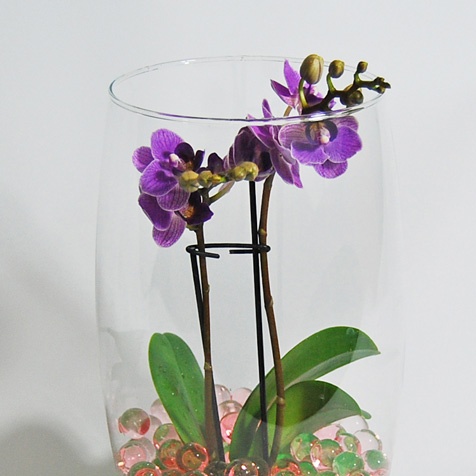 You may be interested in:
You may be interested in:Preparing the bark for orchids
To collect and cut material, you will need a pruner or knife (for wood) with an oblique blade, a wooden spatula with blunt ends and a rope that can bind the bark. For cooking, you can prepare a stainless bucket or any unnecessary dishes, since after boiling the material it will be unsuitable for use at home. How to remove from the tree and grind the bark:
- The dry fragment should be pry off with a spatula, so that it is easily torn off (from top to bottom), and gently separate it from the wood.
- The whole plate must be cleaned of dust, a little scrape off the inner layer.
- Cut the material into medium-sized pieces, remove part of the upper layer of fibers from them.
- All rotten elements and affected by insects must be discarded.
Now you can cut the bark into fractions with sides of 2 cm, it is not necessary to make them even, this will not affect the quality of the future substrate. Pieces can be made larger or smaller (for different purposes). For example, fractions ranging in size from 2 to 5 cm are suitable for growing an adult orchid, and for planting small seedlings or transplanting children, a small fraction of bark is required (from 5 mm to 1.5 cm).
Digestion and drying
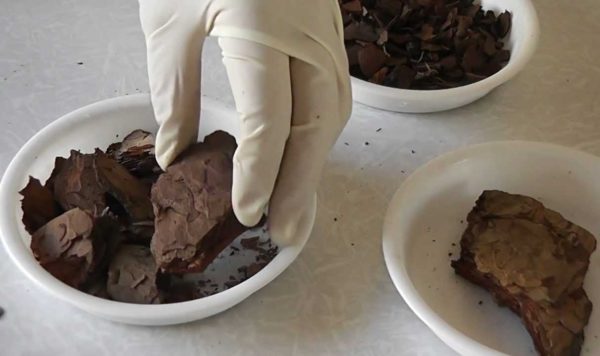 To remove residual dirt, sand, harmful microorganisms and insect larvae, chopped raw materials must be poured into a container prepared for cooking, completely filled with water (leave bumpers of 5 cm each). In the process of boiling, the raw material emerges, it needs to be crushed by something. When the water boils a bucket or the pan should be covered, reduce heat, cook for an hour. After cooking, it is advisable to completely cool the bark, then wrinkle a little with your hands, transfer to a colander, leave until all the water has gone.
To remove residual dirt, sand, harmful microorganisms and insect larvae, chopped raw materials must be poured into a container prepared for cooking, completely filled with water (leave bumpers of 5 cm each). In the process of boiling, the raw material emerges, it needs to be crushed by something. When the water boils a bucket or the pan should be covered, reduce heat, cook for an hour. After cooking, it is advisable to completely cool the bark, then wrinkle a little with your hands, transfer to a colander, leave until all the water has gone.
Drying is recommended to be carried out only in the fresh air, in rainy weather the material can be left under a canopy, and in clear - laid out in a sunny place. Raw materials must be laid out in one layer on a dry, flat surface. Usually it takes about 3-4 weeks to dry, you can check by breaking one fragment (it must be dry inside). If all is well, the bark should be left on the street for another day, then put away for storage.
To harvest oak bark, it is better to take it from a shoot or immature shoots. On the selected branches, you need to make incisions (circular) at a distance of 25 cm, then cut the stem along so that the bark can be easily pried and removed. The material is boiled for about 1, 5 hours, dried. The prepared material should be stored in small batches in a paper or in a loose plastic bag so that air enters. It’s not scary if mold appears on individual elements of the workpiece; for orchids, molds are a natural symbiont.
Orchidists advise soaking the bark. The chopped material should be poured into a bucket, squeezed with a press, pour in a solution of insecticide (extensive effect). Soak for 30-120 minutes. You can also dry the workpiece in the oven (no longer than 15 minutes), however, this method is complicated by the fact that the material needs to be mixed often. A good alternative is digestion in the oven (at 80 ° C for about 20 minutes). Thus you can prepare the bark of spruce and pine.
How to make a substrate
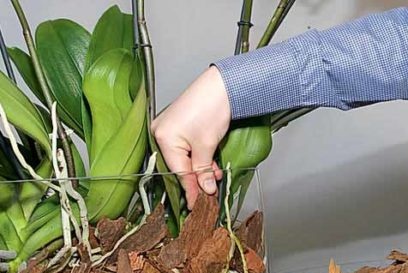 To prepare the substrate, an equal amount of bark, sphagnum moss, peat and charcoal are mixed. In the mixture, you can add scales from pine cones, previously soaked in boiling water (about 7 minutes) and dried. Moss can be found in lowlands, wetlands, do not take material from the roads. In a pinch, a storey, dry one will do.
To prepare the substrate, an equal amount of bark, sphagnum moss, peat and charcoal are mixed. In the mixture, you can add scales from pine cones, previously soaked in boiling water (about 7 minutes) and dried. Moss can be found in lowlands, wetlands, do not take material from the roads. In a pinch, a storey, dry one will do.
Moss should be cleaned from the ground, bugs, twigs, leaves and other debris, soak for 15 minutes in warm water, then rinse with running water, dry a little. Before mixing all the ingredients of the substrate, the harvested moss should be crushed. Charcoal can be replaced with activated (crushed), with a capacity of 8–9 l, no more than 30 tablets will be needed.
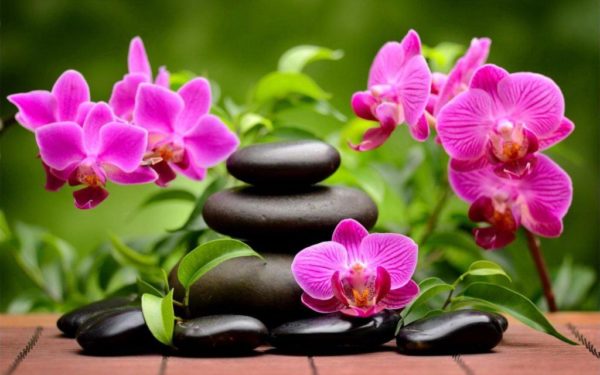 You may be interested in:
You may be interested in:The technology of planting and growing orchids
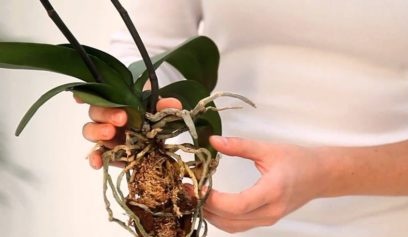 If there is no peat in the substrate, mix the ingredients directly when planting or transplanting a flower. The bark must be additionally soaked in a nutrient solution. A special fertilizer for orchid plants is bred in water, take half the funds from the norm indicated on the package. The bark is lowered into the solution for 2 or 3 hours, then it is thrown back into a colander, used after the moisture has drained. How to plant or transplant a flower:
If there is no peat in the substrate, mix the ingredients directly when planting or transplanting a flower. The bark must be additionally soaked in a nutrient solution. A special fertilizer for orchid plants is bred in water, take half the funds from the norm indicated on the package. The bark is lowered into the solution for 2 or 3 hours, then it is thrown back into a colander, used after the moisture has drained. How to plant or transplant a flower:
- In a thoroughly cleaned and disinfected container, lay a drainage layer (2-3 cm), pour a little substrate.
- The orchid should be placed in a pot so that the roots are evenly distributed throughout the container, and the base of the outlet is 1 cm below the top edge.
- It is recommended to pour the soil a little, periodically shake the pot to shrink and distribute large fragments between the roots.
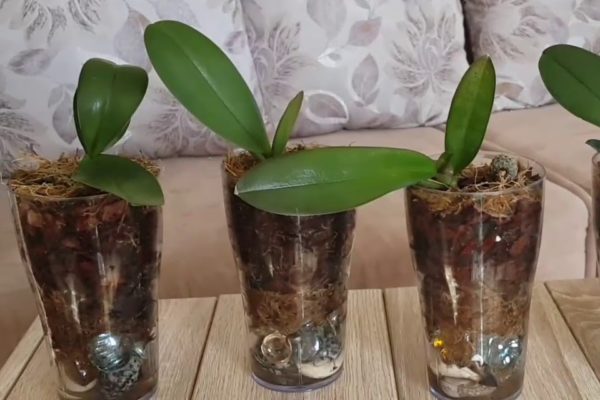 You can not plant an orchid in a substrate, but make a block of large pieces of bark and fix a flower on it. A little sphagnum should be placed on the blocks, an orchid should be pressed against it, fixed with a soft wire or fishing line. You can water the flower only by immersion, the container should be placed in a bowl of water for half an hour, then let the excess moisture drain, return the container to its original place. Watering should be carried out once every 7–20 days, depending on the variety and growing conditions, only settled water at room temperature is permissible.
You can not plant an orchid in a substrate, but make a block of large pieces of bark and fix a flower on it. A little sphagnum should be placed on the blocks, an orchid should be pressed against it, fixed with a soft wire or fishing line. You can water the flower only by immersion, the container should be placed in a bowl of water for half an hour, then let the excess moisture drain, return the container to its original place. Watering should be carried out once every 7–20 days, depending on the variety and growing conditions, only settled water at room temperature is permissible.
When landing, problems rarely occur, most often they appear later, due to improper care. Rotting of the roots is observed with excessive moisture. You can save the plant by normalizing watering. The reason for the appearance of yellow spots on the leaves may be the location of the orchid on the sunny windowsill. There will be no burns if containers are placed on the east side. Often the flower stops growing due to planting in a non-disinfected container or substrate, in which case a transplant is required.
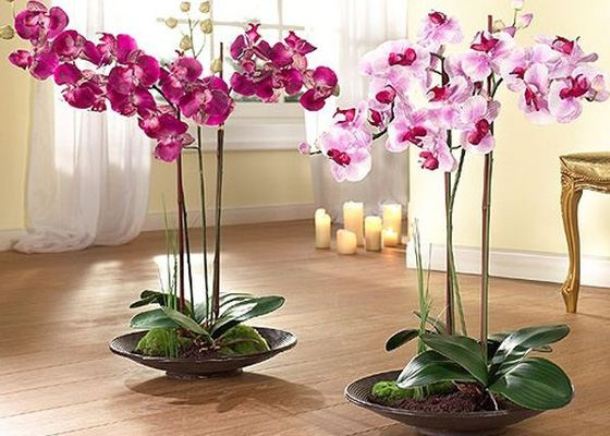 You may be interested in:
You may be interested in:To prepare the bark for orchids, you do not need to have special skills, it is enough to follow simple recommendations and not neglect the details. For planting a flower, it is permissible to use only boiled bark, if it is not disinfected, the risk of developing dangerous diseases increases. It is necessary to transplant the flower carefully and accurately, then there will be no difficulties and troubles. The bark contains nutrients, retains moisture well and promotes the active growth of epiphytes.

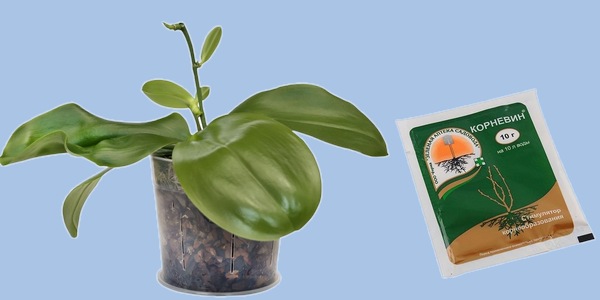
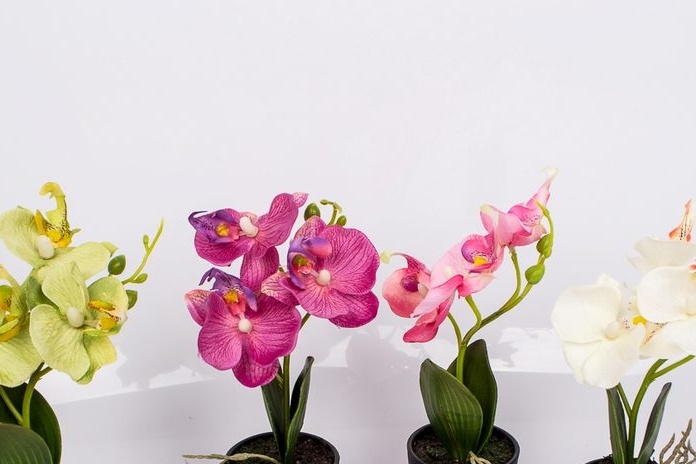
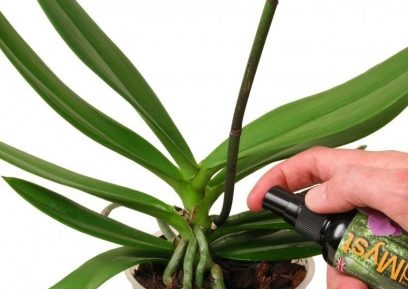
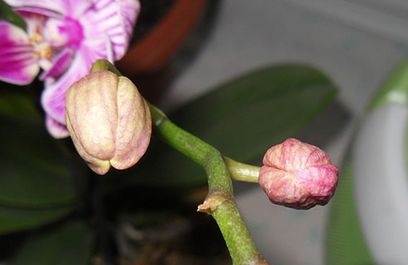 Reasons why orchids fall flowers and what to do
Reasons why orchids fall flowers and what to do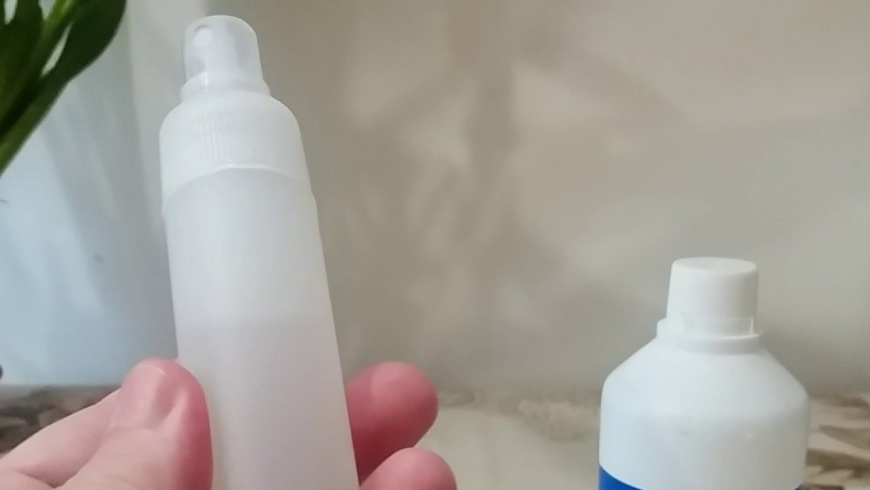 How to use hydrogen peroxide for orchids and why
How to use hydrogen peroxide for orchids and why Midges are wound up in the orchid: effective ways to get rid
Midges are wound up in the orchid: effective ways to get rid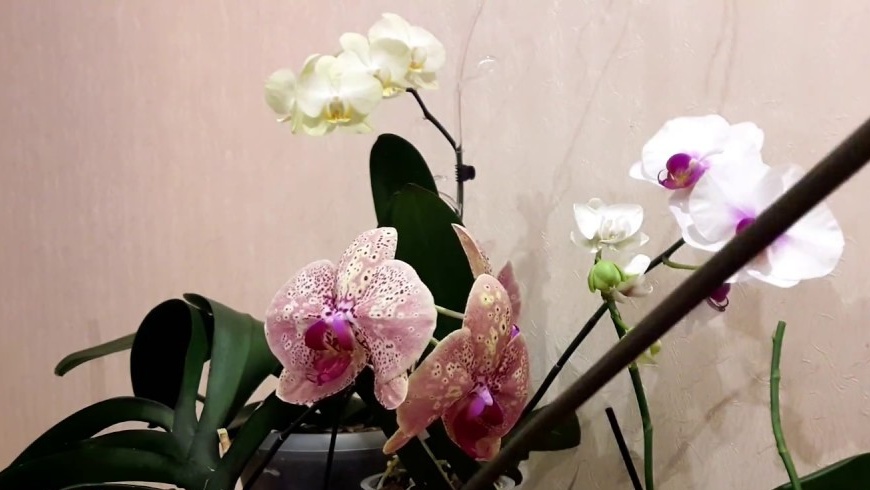 Is it possible to transplant an orchid during flowering
Is it possible to transplant an orchid during flowering